As usually happens, a caseSTUDY begins with a query about servos for some particular model. So this is what led to this brief white paper, and this time it's regarding a popular 40% model, the Skywing 116" Extra NG. If you don't know exactly what I'm talking about, click this text to link to their website (opens within a new tab so you don't lose your place here).
Q. I was thinking of using Savox 2290 but have decided to go with the DS845BLHV for my new 116" wingspan Skywing Extra NG. I'm going electric with a StinGR170 belt reduction drive unit instead of a DA170 and wonder if the DS845 are my best choice in servos for my model?
A. That Skywing 116" Extra NG with a StinGR 170 is a gorgeous model aircraft and as it happens, I own a StinGR 170 drive unit myself so I am both familiar with it (if it matters) and also believe it to be a great choice for your aircraft. However, you've given me all the information I need to help guide you except for one thing. So before I respond, I need you to answer an awkward question, but it's one you must answer honestly because it affects how much you really should spend. Not matters of the heart but matters of the wallet, understand? This question is . . .
--- How hard do you fly? ---
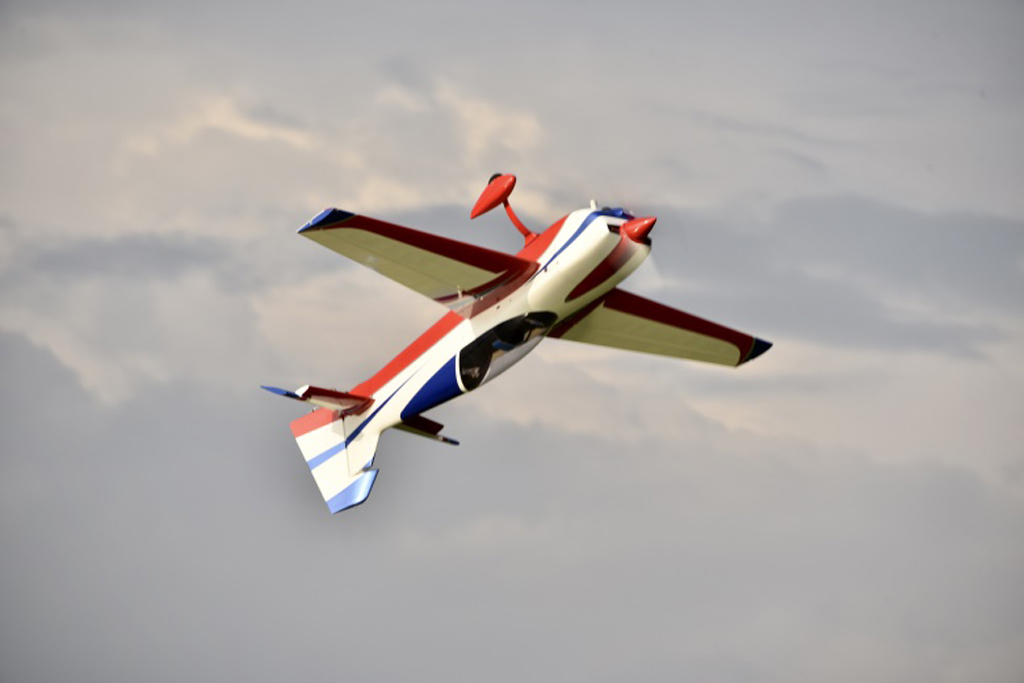
- The inverted elevator is one of the most graceful of all maneuvers in a pilot's repertoire
Reason I need to know how hard you fly before answering which servo is right for you is because there are no two ways about it, this is a big ass airplane. Needs serious servos. Question is, how serious? One thing if you fly it like a nun, whole other story if you fly it like you stole it, catch my drift?
Anyway, when powered by the typical DA170 or GP178 gasser this reproduction of Walter Extra's NG it's quite an impressive beast roaring through the sky! And with electric power, it's a horse of a different color altogether. The size and majesty of a 40-percenter with the quiet and convenience of a 6S-electric Extra spanning a mere 60", or put another way, welcome to the 21st century version of yeehaw!
In what follows we're going to help you decide on what's the right servos for your style of flying because when it comes to the best servos for your 40% model, there's actually only one right answer - the ones customized to your needs!

How hard do you fly?
Are you a club-level pilot? You know, loops, rolls, a bit of inverted (and maybe you've even got the slow roll down pretty good). Or is it the case when you perform snap rolls or a Lomcovák, you ensure you're two mistakes high,and completing a rolling circle involves an element of luck? Or are you a disciplined IMAC type guy who practices certain classes of maneuvers over and over? Or are you definitely a high energy XA pilot?
Look, you can't really be both an IMAC and an XA type (meaning as far as the model goes, it's either one or the other). Reason is; if you fly IMAC 99% of the time but perform hard XA that other 1%, then you should equip the model for the 1% because some maneuvers depend on the right equipment or they just don't come out right. Takes money.
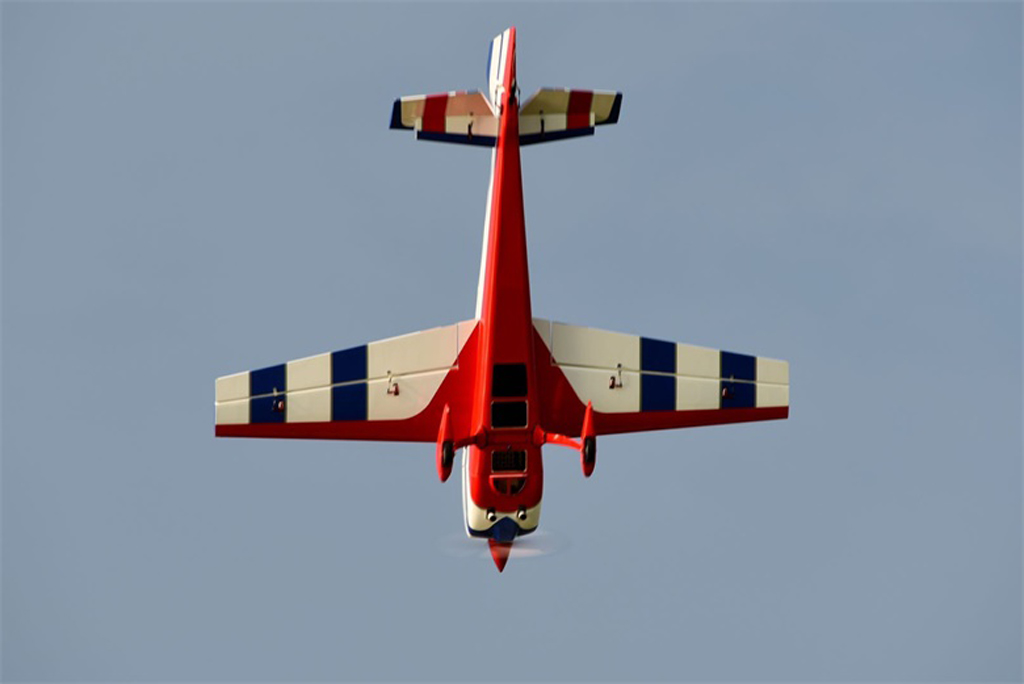
- Nailing the pop top takes practice as a completely vertical alignment is key
Nowhere is this more true than with your servos. Nowhere! Since it costs a fair bit more money to do real XA then it would take the same special kind of stupid (or rich), to buy more than is needed as to not buy enough! So to mix my metaphors, be straight with me because as it says in Matthew 6:24, No man can serve two masters and with accurate information, I can help you save serious money!
However, there's the rub; the problem comes when a typically IMAC pilot wants to occasionally perform XA hi-jinks, but doesn't have servos optimized for that type of aggressive flying. Then he wonders if the reason he can't perform the maneuvers as crisply as those who fly XA all the time (regardless of how much he practices), is because of the plane, the servos, or himself?
When it's the servos, stupid!
Well, I can assure you of this; it's not the plane because the Skywing NG is a delight to see in the hands of a top XA pilot. And honestly, a good IMAC pilot who puts his mind to it can perform any XA maneuver he desires because he has both the requisite flying skill and ingrained discipline to practice and practice and practice 'until' he gets to where he nails a maneuver every time. So if it's not the pilot and it's not the plane, then what's left? Yup, it's down to the servos!
Thus, the heart of the problem comes in when a guy isn't honest with himself. I can't begin to tell you how many club pilots are flying models equipped as if they were the 2nd coming of Jase. Thing is, they are effectively pissin' away their money for performance they can't even begin to feel - but - it's not my place to argue with folks. All I can do is inquire regarding how they fly and then give advice based on what they say.
But I always know what's coming when I ask the question, 'How do you fly?' and they hesitate before saying they do both. Or maybe they say they're going to practice their hard stuff with their new 116" model. Me? I bite my tongue and sell them what they want because whether it's my opinion they're just fooling themselves, or not, it's not really any of my business how a guy spends his money, capice?
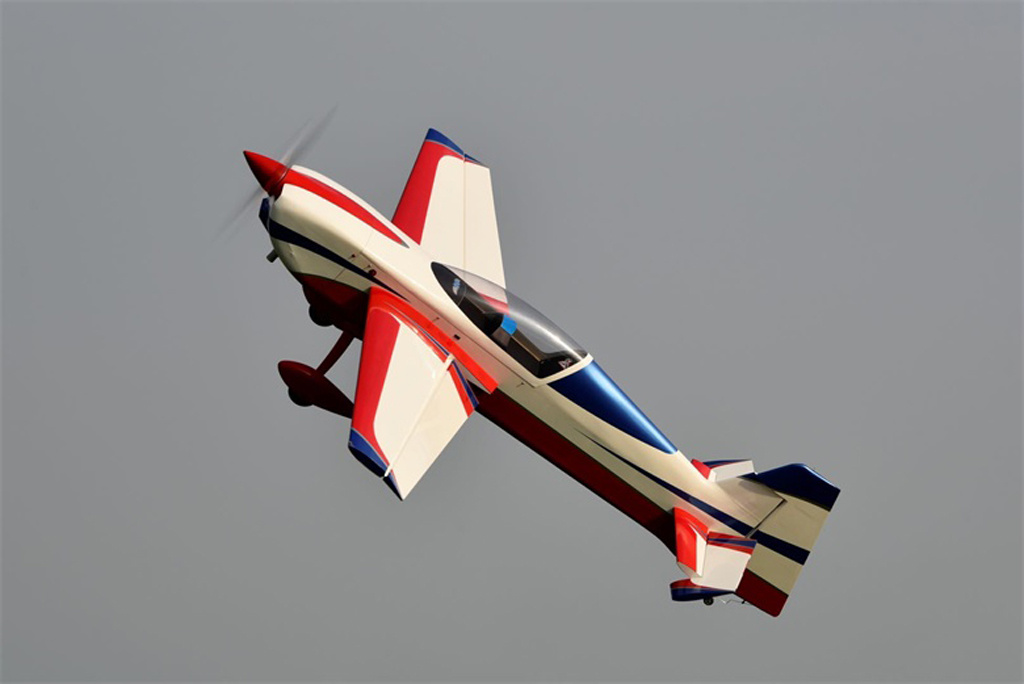
- Gauging the start of the snap roll is duck soup when the model is this predictable
So it's important to answer straight because we offer several suitable servos. Servos ranging from a bit over $100 to over $300 each. In short, because we have 'several' servo solutions for this aircraft, then as usual, the answer to which is best for you is . . . it depends! Surprised? Didn't think so!
So when a guys says both, I move on because that's what we're in business to do, sell stuff. But I feel a bit sad because of my suspicion that quite often I could have saved this guy a boatload of money. Especially because if you want to learn XA-maneuvers, then you're FAR better off buying something like a Flex Innovations QQ Extra 300 foamy instead of a $2000 air frame equipped with $2000 power plant, plus another $2000 in avionics! Get my drift? Clicking this link opens in a new tab as usual if you're unfamiliar with a QQ 300 because it's our best idea for learning to fly 3D maneuvers.
Means the difference between, Oops! after it costs you $300 for the foamy and explaining to your wife how your ego spent more than your checkbook could afford. Big difference between a couple hundred bucks for a screw up versus the better part of several thousand, but whatever, it's your money.
Put another way, it's our advice you should practice with cheapo airplanes, not with once in a lifetime models! Or, if you need practice, don't equip models like this like the real pros do. It's beyond stupid (or you're rich). Then again, if it's the latter, go for it! Heck, if you're rich you're probably handsome and erudite, too, am I right? But I digress.
So we get back to my question 'how do you fly?' and before responding, remember, as William Shakespeare's character Polonius said, 'This above all: to thine own self be true.'
Meaning I don't know you, likely won't ever see you fly, and I am certainly not here to judge. Instead, I'm available to help - but - my advice only helps you 'if' you tell me straight up what you really do with your model. Then I can maybe save you a lot of money. So tell me . . . who killed Cock Robin?
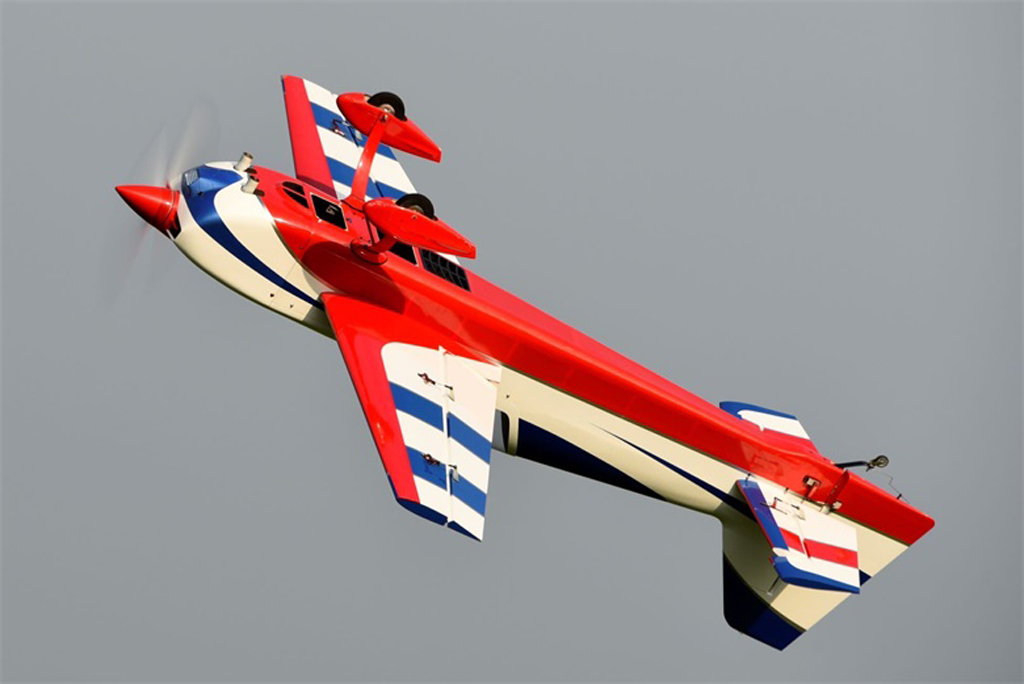
- Just a touch of elevator during the inverted portion of a harrier
Factors:
Note, the recent XA-emphasis on rifle rolls has had a knock-on effect with designers. Basically they are slightly decreasing wingspans to get the aircraft to roll faster. No, not enough so it looks bad, or is oddly out of proportion, just slightly. Point being, strictly speaking, while the 116" wingspan model compared to the 326" span of the full scale works out to 36% (116/326) x 100 = 35.5 or 36%, lengthwise, the 279" full scale
aircraft's length versus the 112" length of the model works out to (112/279) x 100 = 40%.
And it's the fuselage that determines how big an airplane is, get it? So 40-percenter with a 36% wing makes it faster (due to decreased drag). Smaller wing goes faster. Rifle rolls look most impressive when performed fast. A twofer. Physics.
It follows, all things being equal, faster due to decreased parasitic drag meaning more forceful servos required to stick a ginormous control surface into the breeze with authority, right? Like for a rifle roll . . . the reason they made the plane's wings smaller in the first place, remember?
I'm going somewhere by beating this dead horse; the faster it is the more force required so the guys doing rifle rolls need all the power they can get out of a servo. Don't do rifle rolls? Then for crying out loud, don't pay for what you don't need! Not to hurt anyone's feelings but only you know the answer to this, not us, but I can't use smaller words, do you need hand holding before deciding, also?
Here's where we cut to the chase.

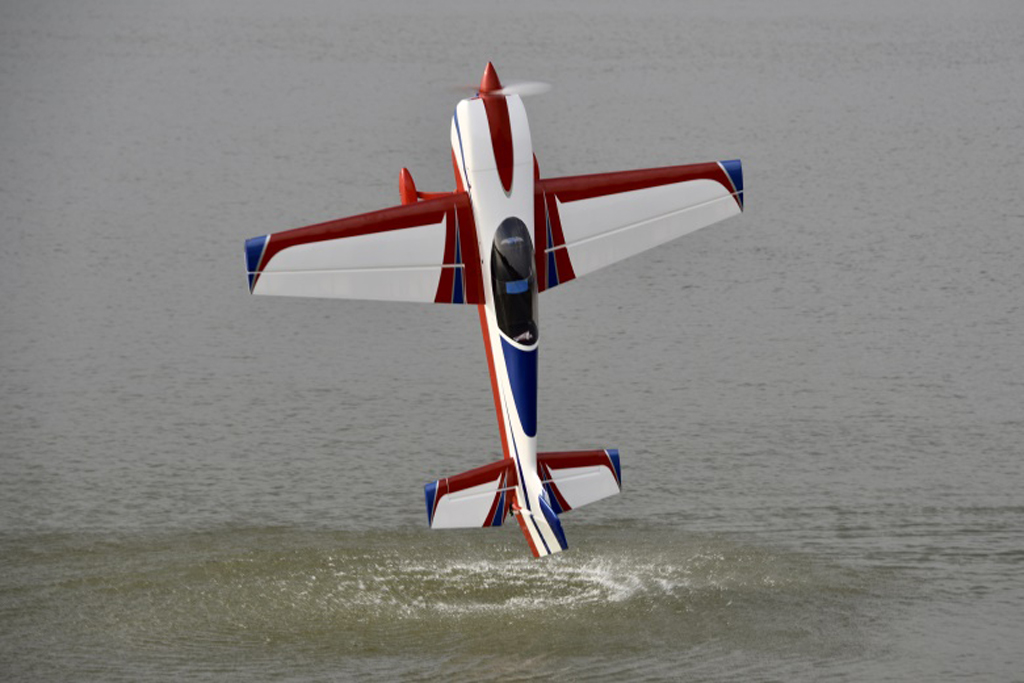
- When the risk is high, the best laugh and perform the torque roll even lower
Club pilot
For the duffer, a club pilot like me, a guy who is happy as a lark going home on Sunday after flying a bunch, who had a great day at the field with his pals, and whose face hurts from smiling so much (and importantly) who didn't break his favorite toy? Honestly, I'd opt for a pair of DS630 on ailerons, a pair of DS930 on elevators, and either a pair of DS930BLHV or maybe a DS1155BLHV for the rudder (the latter if I were into knife edge loops).
This is the best budget build we offer for this class of aerobatic model. Seriously, spending for more servos than these is foolish unless your skills are up to what the model can do. But hey, we're not here to tell you what to do . . . we just give advice when asked. Oh, and for throttle? A DS90DLHV will be perfect.
IMAC
So let's say you're a disciplined pilot, one who uses a weapon like the Skywing Extra NG to perform IMAC maneuvers; then I'd advise you to opt for DS635BLHV on ailerons (two per surface), the DS845BLHV on elevators (one per surface), and two DS1155BLHV on rudder. For throttle? A DS90DLHV will be fine for you also because you're not operating it quickly like the guy performing rolling Harriers, understand?
XA
For a decent XA pilot (the real deal, not just a wannabe who talks a good game), then for that same plane, I'd guide him to a pair of DS845BLHV on each aileron, an DS1155 on each elevator surface, and two DS1155 on rudder (or a single DS1885BLDP with a mount adapter if you're running pull-pull). And throttle-wise, a DS385CLHV at a minimum and preferably a DS635BLHV for its sheer speed. Yes, I know the DS385 and DS635 are overkill but you only need like 10oz-in to operate the throttle and for our part we're simply not going to go to the trouble of making such a servo, take my meaning?
2nd coming
Finally, if you're the 2nd coming of Jase, then DS1155BLHV servos all the way around and either a couple DS1885BLDP ganged together for rudder (mount them near the wing-tube and control the surface through pull-pull cables), or one mega-class DS2685BLHV, again, pull-pull. And another DS635BLHV on throttle for its stupid speed. Lotta money? Yup. Pick your poison!
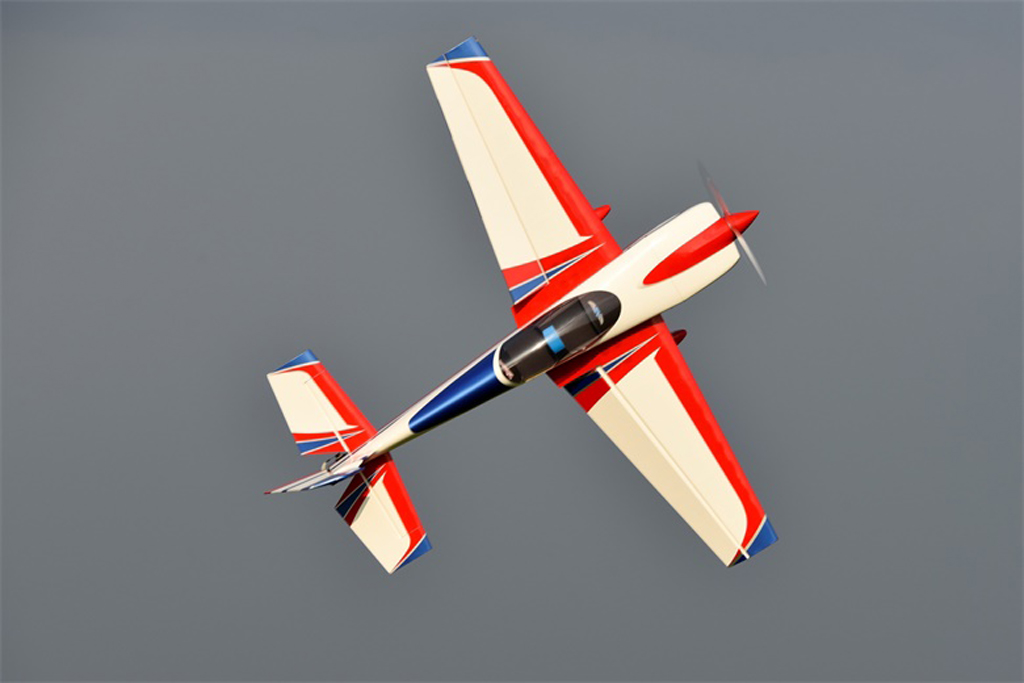
- A graceful study in balance executed to perfection as the knife edge has little roll coupling
Summary:
There's quite a range in the expense of your avionics expenditure when outfitting a 40% aircraft. This, largely depending on how hard you are going to fly it. Not the bullshit you mentally masturbate to, but how you expect it to perform in the real world you inhabit.
I can't say what's best for you, only you can do that, depending on which pilot you are, then we have this summary of our guiding thoughts encapsulated as:
Sport/club pilot:
- 4) DS630BLHV (ailerons)
- 2) DS930BLHV (elevators)
- 2) DS930 (or DS1155BLHV for the rudder)
- 1) DS90DLHV (throttle)
IMAC
- 4) DS635BLHV (ailerons)
- 2) DS845BLHV (elevators)
- 2) DS1155BLHV (rudder)
- 1) DS90DLHV (throttle)
XA:
- 4) DS1155BLHV (ailerons)
- 2) DS1155BLHV (elevators)
- 2) DS1155BLHV (rudder)
- 1) DS635BLHV (throttle)
Extreme:
- 4) DS1155BLHV (ailerons)
- 2) DS1155BLHV (elevators)
- 2) DS1885BLDP (rudder) or maybe even a DS2685BLHV
- 1) DS635BLHV (throttle)

TL:DR
Our best advice for equipping a 40% model with servos? Don't pay for what you can only feel in your wallet. Not saying don't spend for quality because that remains long after you've forgotten the ouch in the balance statement. There's a difference, and you know it (else you wouldn't have settled on the DS845 over the Savox to begin with).
Anyway, I take the broader meaning of your question for why you settled on the DS845 and I hope my thoughts will help clarify your own. I have one final thought to share and it regards the servo horns and extensions.
Servo horns and extensions:
First, never use extensions thinner than the heaviest available, which is 20AWG. Ours have the benefit of using silicone jackets which makes them easier to route and more abrasion resistant. There are lots of good choices but be careful, OK? These things range in cost from $4-8 so there are better places to skimp.
Second, the majority of aluminum servo horns available on the market were designed when 300oz-in servos were the cat's meow. But the world turns and ever stronger servos are the norm, not just for us but from others. For example, MKS offer a servo with an 8mm spline shaft for a reason. We do too.
Brings us to why we offer the same horns (in both single arm and double) in a -25T spline 'and' a -15T configuration. Don't be dumb because getting the 25T when you needed 15T is just going to waste time and money exchanging them for the right bits. Heads up, eh?
So here's the thing with regard to the servo horns we offer, especially the UltraDuty servo horns, which are thicker than ordinary arms for a reason (and pricewise are virtually the same as competing lighter duty servo arms), there's a time and a place to count grams. And there are times when it should be the last thing on your mind. This is one of the latter.
With grateful thanks to RC Skywing for the flight-images, and in closing, as always we welcome your thoughts.